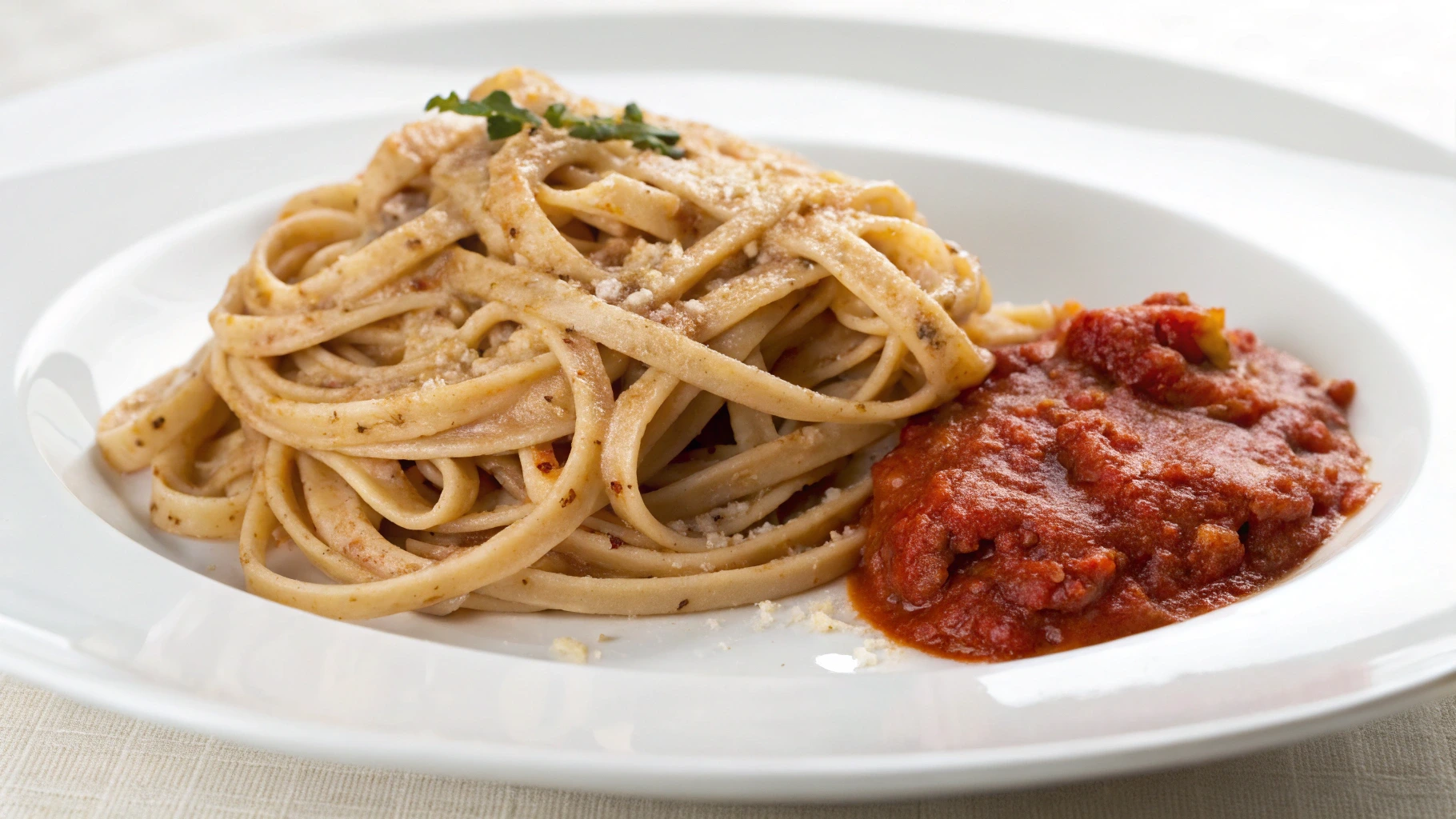Gluten free pasta is an increasingly popular option for individuals with glutens sensitivities, celiac disease, or those following a glutens-free diet for other health reasons. With the rise of gluten-related health concerns, many people are seeking alternatives to traditional pasta made from wheat. Glutens free pasta offers a variety of benefits and can be made from a variety of glutens-free grains and flours. Whether you’re new to glutens free eating or have been living with dietary restrictions for years, knowing more about glutens free pasta can help you make informed decisions for both your health and culinary experiences. This article will explore the different types of glutens free pasta, how it’s made, and how to incorporate it into your meals.
For more inspiration on gluten-free recipes, check out how to make gluten-free pancakes or a delicious avocado salad.
Exploring the Different Types of Pasta Options
There are several types of glutens free pasta available on the market, and each one offThere are several types of glutens free pasta available on the market, and each one offers a unique texture and flavor. Commonly used ingredients in glutens free pasta include rice flour, corn flour, quinoa, and even legume-based flours like chickpea or lentil. The type of flour used will determine the taste, texture, and cooking characteristics of the pasta.
- Rice flour pasta: Typically the most common glutens free pasta, it has a mild flavor and is perfect for soaking up sauces.
- Corn flour pasta: Offers a slightly sweeter flavor and a firmer texture.
- Chickpea pasta: Made from chickpea flour, this type has a nutty flavor and is rich in protein and fiber.
- Quinoa pasta: Known for its high nutritional value, quinoa pasta offers a slightly earthy taste and is often blended with other flours like corn or rice to enhance its texture.
Understanding the differences can help you choose the best glutens free pasta based on your preferences and dietary needs. You might also enjoy exploring some gluten-free dessert recipes, like chocolate pumpkin cupcakes.
The Process Behind Making Gluten-Free Pasta
The process of making gluten free pasta differs from traditional pasta due to the absence of gluten. To make gluten free pasta, manufacturers start with a blend of gluten-free flours, which are mixed with water and sometimes added starches or gums for binding. The dough is then kneaded and shaped into various pasta forms, such as spaghetti, penne, or fusilli. The absence of gluten requires careful handling of the dough, as gluten usually provides elasticity and structure in traditional pasta.
Once manufacturers form the pasta, they typically dry it or sometimes sell it fresh. Drying the pasta extends its shelf life and allows for easy storage. The result is a product that closely mimics traditional pasta, although there may be slight differences in texture and taste. For more culinary ideas, try making school pizza or a comforting steak and potatoes meal.
Health Benefits and Considerations for Gluten-Free Diets
GlGluten free pasta offers a valuable solution for individuals who must avoid gluten for medical reasons. However, it’s essential to note that not all gluten-free pasta offers the same health benefits. Some manufacturers make gluten-free pastas from refined flours, which may not provide the same nutritional value as whole grain options.
- Nutritional differences: Traditional pasta made from whole wheat provides fiber and other nutrients, but many gluten free pastas are made from refined rice or corn flour, which can be lower in fiber.
- Dietary fiber: Some gluten free pastas, such as those made with chickpeas or quinoa, are higher in fiber, making them a better option for digestive health.
- Fortification: Certain gluten free pasta brands fortify their products with added vitamins and minerals like folate, iron, and B12 to address potential nutritional gaps.
It’s crucial to pay attention to the ingredients and choose pasta that aligns with your overall health goals. If you’re interested in other gluten-free meal ideas, consider making French onion soup with rice.
Tips for Perfectly Cooking Gluten-Free Pasta
Cooking gluten free pasta requires some adjustments compared to traditional pasta. Since gluten free pasta is more delicate, it’s important to follow a few tips to achieve the best results.
- Boiling water: Ensure the water is boiling vigorously before adding the gluten free pasta to prevent clumping.
- Stir regularly: Stir the pasta frequently while cooking to avoid sticking and to ensure even cooking.
- Al dente texture: Gluten free pasta can sometimes become mushy if overcooked. For the best texture, cook it slightly less than the recommended time, and check frequently for doneness.
- Rinse after cooking: Some types of gluten free pasta, especially rice or corn-based ones, benefit from being rinsed after cooking to remove excess starch.
By following these simple steps, you can improve the texture and taste of your gluten free pasta, making it more enjoyable. If you’re craving more comfort food, consider trying a tasty pancake breakfast.
Delicious Ways to Incorporate Gluten-Free Pasta in Meals
You can use gluten-free pasta in a variety of recipes, from simple dishes like spaghetti with marinara sauce to more complex meals like baked pasta casseroles. The key is to choose the right pasta shape and adjust the cooking method to achieve the desired texture. Here are some popular ways to incorporate gluten free pasta into your meals:
- Pasta salads: Use gluten free pasta in chilled pasta salads with fresh vegetables, herbs, and a light dressing.
- Baked pasta dishes: Glutens free pasta works well in lasagna, baked ziti, or macaroni and cheese, where sauce and cheese create a rich, flavorful dish.s
- Stir-fries: You can toss gluten-free pasta into stir-fries with vegetables, protein, and a savory sauce for a satisfying meal.
When experimenting with glutens free pasta, try different shapes and cooking techniques to find what works best for your favorite recipes. Looking for more ideas? Try a delicious heart-shaped cake for a fun twist.
Comparing Gluten-Free Pasta to Traditional Pasta
The primary difference between glutens free pasta and traditional pasta is the lack of gluten in the former. This affects both the texture and the cooking process. Glutens free pasta tends to have a slightly different texture; it may be softer or more prone to breaking if overcooked. Additionally, the taste of glutens free pasta can differ, depending on the type of flour used in its production.
In terms of nutrition, traditional pasta often provides more fiber, especially when made from whole wheat. However, glutens free pasta can still provide essential nutrients if made from high-quality, whole-grain ingredients like quinoa or brown rice. It’s important to read the labels and choose a glutens free pasta that aligns with your dietary preferences.
Pasta Choices for Special Diets and Nutritional Needs
Gluten free pasta is a great option for individuals following specific diets. For those with celiac disease or gluten sensitivity, this pasta is essential. However, it can also serve other dietary needs, such as:
- Low-carb diets: Certain gluten free pasta options, especially those made from vegetables or legumes like zucchini or chickpeas, are naturally lower in carbohydrates.
- High-protein diets: Chickpea or lentil-based pasta can be an excellent choice for those looking to increase their protein intake.
- Vegan diets: Many gluten free pastas are vegan-friendly, as they contain no animal-derived ingredients. Always check the label to confirm.
By selecting glutens free pasta made from nutritious ingredients, you can meet your dietary requirements without sacrificing flavor.
Key Factors When Purchasing Glutens-Free Pasta
When purchasing glutens free pasta, it’s essential to consider several factors to ensure you’re getting a high-quality product. Here’s what to look for:
- Ingredients: Choose glutens free pasta made from whole grains or legumes, which offer more nutrients and fiber.
- Texture and taste: Check reviews or try different brands to find one with the best texture and flavor that suits your taste preferences.
- Certifications: Look for products labeled with certified gluten-free symbols to ensure they meet strict gluten-free standards.
- Added preservatives: Some gluten free pastas contain preservatives or artificial flavors. Choose natural products when possible.
Proper Storage Techniques for Glutens-Free Pasta
To maintain the freshness and flavor of glutens free pasta, it’s crucial to store it correctly. Whether it’s dry or cooked, following proper storage guidelines can help you avoid spoilage.
- Dry pasta: Store unopened packages in a cool, dry place like a pantry. Once opened, keep it in an airtight container to preserve its freshness.
- Cooked pasta: Store leftover cooked pasta in an airtight container in the refrigerator. It can last for 3–5 days. To reheat, add a little water and heat on low to prevent it from drying out.
By following these simple storage tips, you can keep your glutens free pasta fresh for longer, minimizing waste and enjoying it at its best.
Debunking Common Myths About Gluten-Free Pasta
Despite its popularity, there are several myths about glutens free pasta that may cause confusion. Let’s address some common misconceptions:
- Myth 1: Gluten free pasta is tasteless and bland.
Fact: Many glutens free pasta brands have improved their recipes, offering a wide variety of textures and flavors. Some varieties, like chickpea or quinoa pasta, offer unique, delicious tastes. - Myth 2: Gluten free pasta is less nutritious than regular pasta.
Fact: While some glutens-free pastas are made from refined flours, many whole grain and legume-based options are rich in protein and fiber. - Myth 3: Gluten free pasta is always healthier.
Fact: Some glutens-free pasta is not healthier, as manufacturers make it with refined starches. It’s important to check the ingredients to ensure you’re choosing a nutritious option.
By understanding the facts, you can make more informed decisions about glutens free pasta.
FAQs
What is glutens-free pasta made of?
Manufacturers typically make glutens-free pasta from alternative flours like rice, corn, quinoa, or chickpeas. These ingredients replace wheat flour, providing a gluten-free option.
Is glutens-free pasta healthier?
While gluten-free pasta can be a good choice for those with glutens sensitivities, it isn’t necessarily healthier. Often, it has a different nutrient profile, so it’s important to check the ingredients for added nutrients or preservatives.
Why does glutens-free pasta taste different?
Gluten-free pasta tastes different because it lacks the wheat proteins that give traditional pasta its chewy texture. As a result, it can have a lighter or more grainy taste depending on the flour used.
Does glutens-free pasta contain eggs?
Some gluten-free pasta contains eggs, especially those made with rice or corn flour. However, many varieties are egg-free, so it’s important to check the label if you’re avoiding eggs.
Conclusion
Gluten free pasta is an excellent choice for those with glutens sensitivities or those seeking a nutritious alternative to traditional pasta. With numerous types available, ranging from rice flour to chickpea and quinoa, there is a glutens free pasta to suit every taste and dietary need. While it may require some adjustments in cooking, glutens free pasta can be a versatile and delicious addition to your meals. By being mindful of ingredients, choosing the best pasta for your needs, and incorporating it into a variety of recipes, you can enjoy all the benefits of glutens free pasta without sacrificing flavor or texture. If you’re interested in experimenting with other gluten-free meals, try recipes like steak and potatoes or pancake breakfast.

